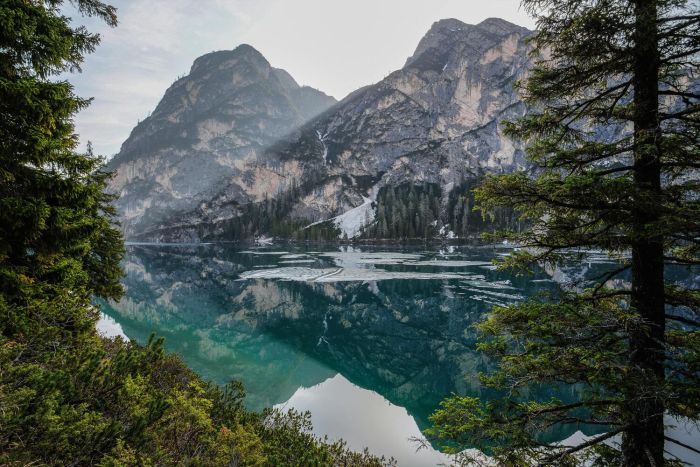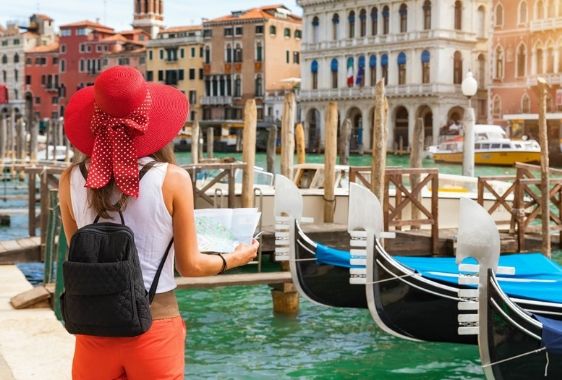Secrets and Facts about the Sistine Chapel
The Sistine Chapel is one of the must-see historic sites of Rome and draws tens thousands of travelers taking vacations in Italy each day. Discover the hidden treasures of the Vatican with our Private Vatican Tour with Sistine Chapel - where expert guides reveal stories that most visitors never hear.
The Hidden Secrets of the Sistine Chapel: Michelangelo's Revolutionary Frescoes
Five hundred years ago, at evening vespers on October 31, 1512, Pope Julius II officiated a Mass to inaugurate the Sistine Chapel and unveil its crowning touch: the stunning ceiling mural by artist Michelangelo that was newly finished after over four years of toil. The Old Testament stories depicted by the genius Michelangelo create an awe-inspiring place to pray and contemplate spiritual matters and have been considered one of the most important works of art in the world ever since.
Hidden Secrets of the Sistine Chapel Architecture: From Solomon's Temple to Today
The Sistine Chapel's dimensions aren't random - they mirror the exact proportions of Solomon's Temple as described in the Old Testament. This architectural choice creates perfect acoustics for Gregorian chants and papal ceremonies. Hidden marble markings on the chapel floor reveal the exact spots where cardinals should stand during papal conclaves, a tradition that continues to this day.
Fun Facts About the Sistine Chapel's Modern Day Visitors
The massive frescoes span the entire ceiling, a scale so grand and incredible it is unimaginable until you visit and see it in person. Over 20,000 people visit the Sistine Chapel each day, either lining up to see it during visiting hours or booking small, private tours to skip the long ticket lines and benefit from a knowledgeable guide to lead the tour and discuss the history and artwork.
Experience all of Rome's artistic wonders in one perfectly planned day with our Rome in a Day Tour with Sistine Chapel. From ancient ruins to Renaissance masterpieces, see how it all connects.
Interesting Facts About the Sistine Chapel: Beyond The Creation of Adam
While most people are familiar with details of Michelangelo’s Sistine Chapel ceiling – notably the image of God reaching out to touch the hand of Adam and give him life – there is so much history behind this magnificent chapel that travelers who take our small group, Vatican Sistine Chapel walking tour are amazed to learn historical facts and scholarly assumptions that make this combination of art and architecture all the more impressive. Four hours is just enough time to really grasp some of the rich history of this Vatican treasure’s secrets.
Michelangelo Sistine Chapel Facts: The Artist's Personal Journey
Initially reluctant to accept the Sistine Chapel commission, Michelangelo considered himself primarily a sculptor. Despite his protests, he developed innovative techniques for the massive project, including a special scaffolding system. He would work for hours in uncomfortable positions, often with paint dripping onto his face. His determination led him to complete the project alone, refusing assistance from other artists.
Sistine Chapel Secret Messages: The Hidden Symbols in Michelangelo's Art
Art historians have discovered numerous hidden symbols within Michelangelo's frescoes. One intriguing detail is the human brain outline in "The Creation of Adam" formed by God's billowing cloak. Some scholars suggest Michelangelo included anatomical elements from his secret cadaver studies. Additionally, several figures seem to contain coded messages criticizing church corruption - a dangerous move at the time.
10 Sistine Chapel Secrets and Facts Most People Don't Know
Here are some facts and secrets to introduce you to the Sistine Chapel:
• The Sistine Chapel is named for Pope Sixtus IV. It was consecrated as a place of worship during a ceremony with the first Mass celebrated there on August 9, 1483. That date was the Feast of the Assumption, fitting since the chapel was dedicated to the Virgin Mary.
• Pope Sixtus IV commissioned many great Renaissance artists to paint frescoes on the walls of the chapel, including Sandro Botticelli, Pietro Perugino, and Pinturicchio.
• Pope Sixtus IV was the uncle of Pope Julius II, who commissioned Michelangelo to create frescoes for the ceiling. Before this the ceiling was rather plainly painted blue with stars, so plain and ugly that Michelangelo was insulted not only because he considered himself a sculptor rather than a painter but because he likened the ceiling to the “roof of a barn.” It took time and the promise of a sculpting commission before Michelangelo consented to re-fresco the Sistine Chapel’s ceiling.
• The sheer scale of the chapel ceiling is staggering. It measures approximately 40 meters (131 feet) long by 13 meters (43 feet) wide – working out to well over 464 square meters (5,000 square feet) of frescoes painted by Michelangelo.









